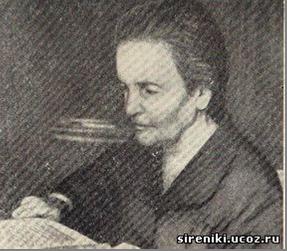N. Vakhtin: Rubtsova's 1940s Chukotka Yupik Texts
Background

Ekaterina Rubtsova was born on November 11, 1888 in the village of Russkie Chukaly, Simbirsk province, located in European Russia's Volga valley. In her early years she lived in a rural setting working as a seamstress.
At the age of forty, she made her move to the Russian far east city of Petropavlovsk in Kamchatka, living with her brother while working at a small hospital. One year later, she was living and working among the Aleut as a teacher on Mednyi Island of the Commander Islands in the village of Preobrazhenskoye.
In 1929 she moved again to the southern coast of the Chukotka penisula to live in Sireniki. She taught at the Imtuk-Sireniki school, one of the first of three Soviet Eskimo schools at the time. She was one of three Russian linguists(G. A. Menovshchikov and K.S. Sergeeva) to be known as the first "teachers." Eventually she left for Leningrad to receive formal training at the Hertsen Pedagogial Institute.
She remained in Leningrad completing her studies then working at the Institute for People of the North as a junior researcher for Linguistic Section on Yupik language. At this time she publishes many books; translations in Eskimo, arithmetic series and reader. During 1940 she is sent back to Chukotka by the Institute to collect folklore and language materials and later publishes the Russian-Eskimo dictionary. Russia is part of the disintegrating world order and communication with the Institute is disrupted. Undaunted, she continued with her work and stayed until 1947.
In 1954, Rubtsova published her major work, "Materials in the language and folklore of the Eskimos." These "Materials" were the fieldwork notes and language materials she had collected while in Chukotka during the 1940s. Linguists and others familiar with her work refer to it as, " Rubtsova 1." She worked on the second volume through the 1960s but never completed it.
The purpose of this IPY project is to edit and prepare the unfinished work for publication. This collection contains the language describing the Yupik culture of 70 years ago. Vakhtin states there is one other collection from that same period. Studies in dialectal differences and folklore motifs are the major cultural aspects brought to light by this work.
Complete set of Chukotka Fieldnotes organized in 2 Volumes
Each text is recorded in Cyrillic (Russian) transcription. The name of the storyteller, dialect, place date are noted. Other questions, observations are written throughout each text. Rubtsova also made a Cyrillic translation of each text.
Volume 1, 45 texts in the Ungaziq or Chaplino dialect, contained only about half (all from one speaker) of total corpus of 'Asiatic Eskimo' texts she collected ca 1940. Rubtsova published this in 1954.
Volume 2 ( the subject of this study) is organized in 3 large old-style folders, approximately
300 pages each.
The first folder contains 25 texts and 134 songs, varied by storyteller. The speakers
are from Ungaziq (Chaplino dialect), Kivak (Chaplino), and East Head (Naukan dialect)
offering variety within dialects and idiom as well.
Vahktin transliterated this first folder, faithful to Rubtsova's spelling, in St.
Lawrence orthography with English translation from Rubtsova's Cyrillic translation.
Folder 2 contains 19 texts in Chaplinski.
Vahktin edited and then typed Rubtsova transcription of the Chaplinski and her Cyrillic
translation of the texts.
Folder 3 contains 18 texts also in Chaplinski.
Vahktin edited and then typed Rubtsova's transcription of the Chaplinski and her Cyrillic
translation of the texts.
Click on the links below to view all copies of Vakhtin's work.
Folder one, https://uaf.edu/anla/record.php?identifier=SY930R1940a
Folder two, https://uaf.edu/anla/
Folder three, https://uaf.edu/anla/record.php?identifier=SY930R1940c


